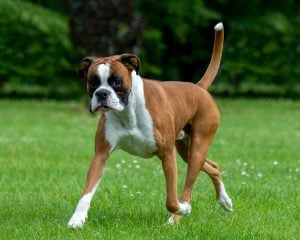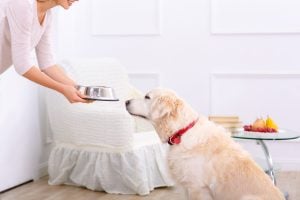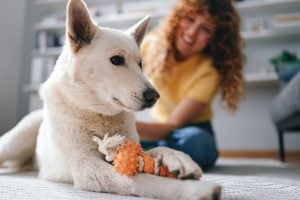The Beauceron is a striking and intelligent working dog breed with deep roots in French history. Loyal, alert, and powerfully built, this breed excels in herding, guarding, and companion roles alike. Whether you’re an experienced dog owner or learning about the Beaucerons for the first time, this guide covers all about the Beauceron dog breed—from their origin and temperament to ideal food choices and care tips.
A Brief History of the Beauceron Dog Breed
The Beauceron, also known as the Berger de Beauce, originates from rural France and dates back to the Middle Ages. Named after the region of La Beauce, this breed was primarily developed as a sheepdog and guard dog. Its powerful frame and natural intelligence made it an ideal choice for managing livestock and protecting farms.
During both World Wars, the Beauceron was enlisted as a military dog, performing duties such as carrying messages, detecting mines, and guarding camps. Its courage and obedience earned it great respect among soldiers and civilians alike.
Today, the Beauceron remains a valued working breed but is also growing in popularity as a loyal and active family dog.
Key Beauceron History Facts:
-
Originated in France, over 400 years ago
-
Traditionally used for herding and protection
-
Served in both World Wars
-
Still used today in police, military, and search-and-rescue work
Beauceron Personality Traits
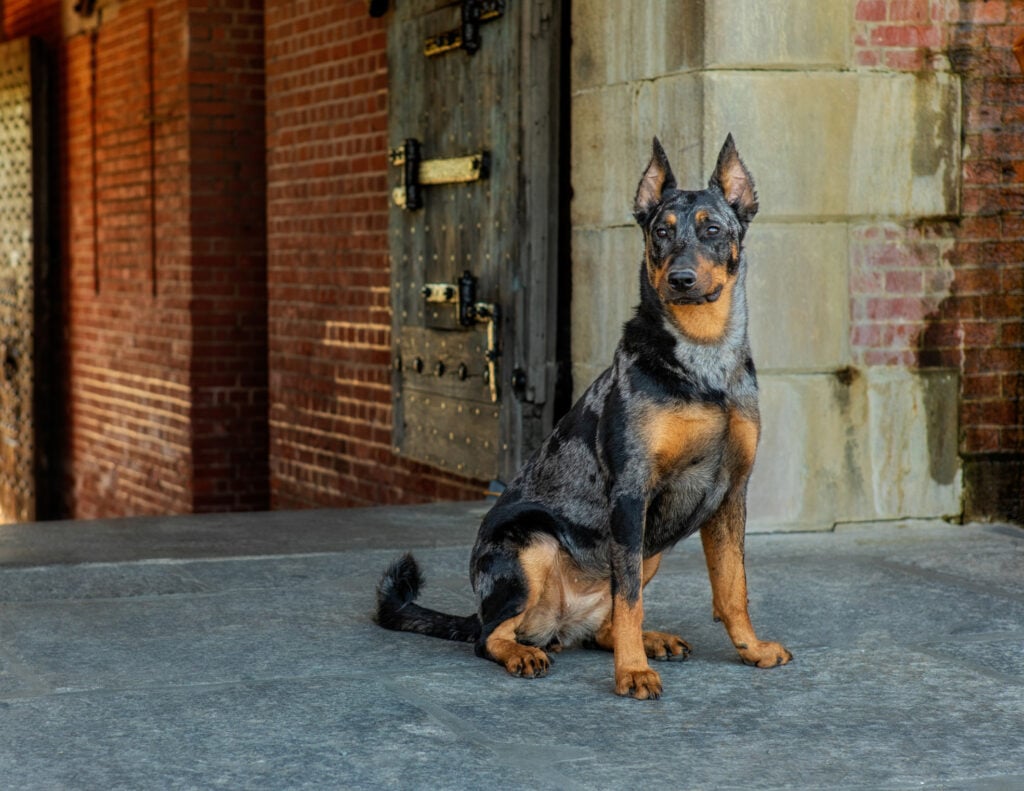
Beaucerons are not your average pet—they require attention, training, and purpose. This breed is known for being intelligent, loyal, protective, and confident, making them excellent working dogs and devoted family companions when properly socialized.
1. Highly Intelligent and Trainable
The Beauceron thrives on mental stimulation. They respond well to structured training and love to learn. With consistency and leadership, they can master advanced obedience and complex tasks.
2. Confident and Protective
Beaucerons have strong guardian instincts. They are naturally protective of their family and property but are not typically aggressive without cause. Early training helps balance their protective nature with good social behavior.
3. Energetic and Purpose-Driven
This is a high-energy breed that does best with a job to do. Whether it’s agility, herding, tracking, or just daily running sessions, a Beauceron needs regular physical and mental activity.
4. Loyal and Affectionate with Family
Despite their intimidating appearance, Beaucerons are deeply loyal and affectionate. They bond closely with their people and do especially well with active households.
5. Not Ideal for First-Time Dog Owners
Because of their strength and intelligence, Beaucerons are best suited for experienced dog owners who can provide firm, fair training and consistent leadership.
Nutrition and Feeding Tips for Beaucerons
Feeding a Beauceron properly is essential for maintaining their muscular build, joint health, and energy levels. These large, active dogs do best on high-quality food rich in protein and nutrients.
Key Diet Considerations:
-
High-Quality Protein: Look for real meat sources like chicken, beef, or fish as the first ingredient to support muscle development.
-
Joint Support: Large breeds benefit from glucosamine and chondroitin for joint health.
-
Moderate Fat: Healthy fats, like omega-3s from fish oil, support energy and coat health.
-
Limited Fillers: Avoid cheap fillers like corn, wheat, and soy which may contribute to allergies or digestive issues.
Feeding Guidelines:
-
Puppies: 3–4 meals per day with food formulated for large breed puppies
-
Adults: 2 meals per day with controlled portions to prevent overeating
-
Seniors: Consider lower-calorie options with joint support as they age
Recommended Food Brands Available at Hollywood Feed:
-
Farmina N&D Ancestral Grain – great for active dogs with whole food ingredients
-
Fromm Gold Large Breed – balanced formulas designed for large breed dogs
-
Orijen Original – high-protein, biologically appropriate food
-
Stella & Chewy’s Raw Coated Kibble – minimally processed, protein-rich meals
Always consult your vet for breed-specific and age-appropriate nutrition recommendations.
Toys and Activities for The Beauceron Dog Breed
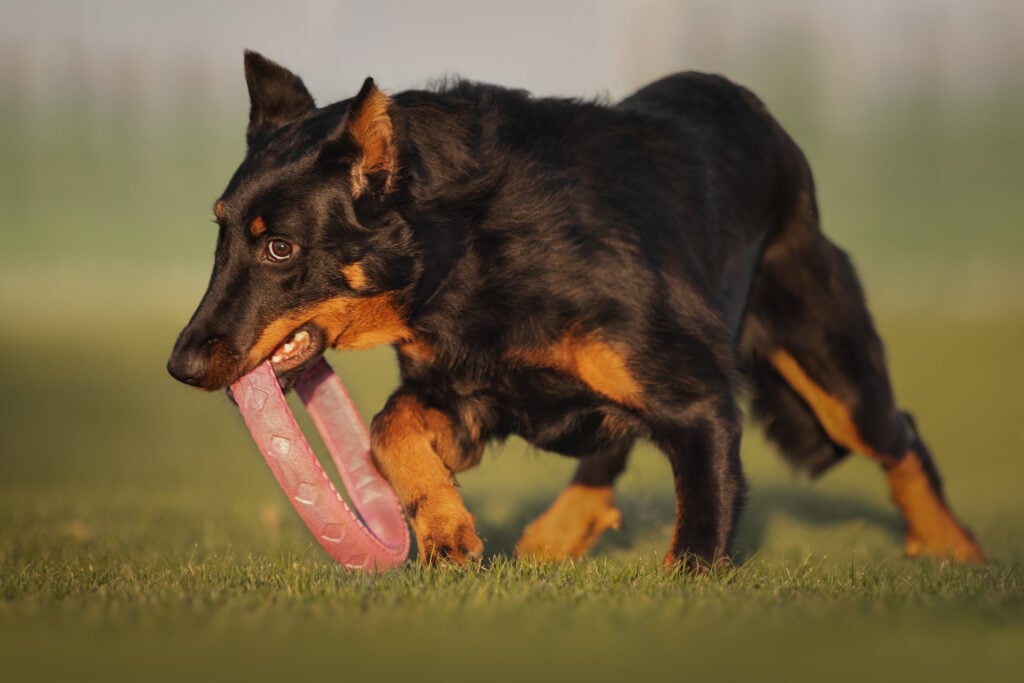
Due to their intelligence and drive, Beaucerons love toys that challenge both their mind and body.
Top Toy Picks:
-
Interactive Puzzle Toys: Engage their brains with treat-dispensing puzzles like the Outward Hound Brick.
-
Tug Toys and Ropes: Great for bonding and releasing energy.
-
Durable Chew Toys: Heavy-duty rubber toys like KONGs can stand up to strong jaws.
-
Agility Equipment: Tunnels, hurdles, and weave poles can be great in your backyard for training and stimulation.
-
Balls and Frisbees: For high-energy play sessions—try Chuckit! launchers for extra exercise.
Make sure toys are large and durable enough for powerful chewers and supervised when needed.
Grooming and General Care Tips
Despite their double coat, Beaucerons are relatively low-maintenance.
Grooming Tips:
-
Brushing: Weekly brushing to manage shedding and keep the coat healthy.
-
Bathing: Bathe only as needed (every 1–2 months) to preserve natural oils.
-
Nail Care: Trim nails regularly to prevent discomfort or joint issues.
-
Ear Cleaning: Clean ears to avoid buildup and infections.
Exercise Needs:
-
At least 60–90 minutes of exercise daily
-
Long walks, running, or active play is ideal
-
Mental stimulation is just as important—training, games, and tasks
For more exercise inspo check out our blog post: 10 Ways to Exercise with Your Dog
The Beauceron Dog Breed Recap: Key Takeaways
-
Origin: France; working and herding dog
-
Temperament: Intelligent, protective, confident
-
Diet: High-protein, joint-supporting food
-
Energy Level: Very high—needs daily exercise and mental stimulation
-
Grooming: Moderate; weekly brushing and basic maintenance
-
Best For: Experienced dog owners, active households
Frequently Asked Questions About Beaucerons
Q: Are Beaucerons good family dogs?
A: Yes, with proper training and socialization, they can be loving, protective, and gentle with children.
Q: Do Beaucerons get along with other pets?
A: They can, especially if raised with them. Early socialization is key.
Q: How much exercise does a Beauceron need?
A: At least 60–90 minutes of vigorous activity daily, plus mental enrichment.
Q: Do Beaucerons shed a lot?
A: They have a double coat and do shed moderately, especially in spring and fall.
Q: Are Beaucerons hard to train?
A: They are highly trainable but need firm, consistent leadership and engagement.
If you’re looking for a loyal, intelligent, and hard-working companion, the Beauceron might be your perfect match. Visit your local Hollywood Feed or shop online for top-rated dog food, training tools, and toys tailored to the Beauceron’s needs!





